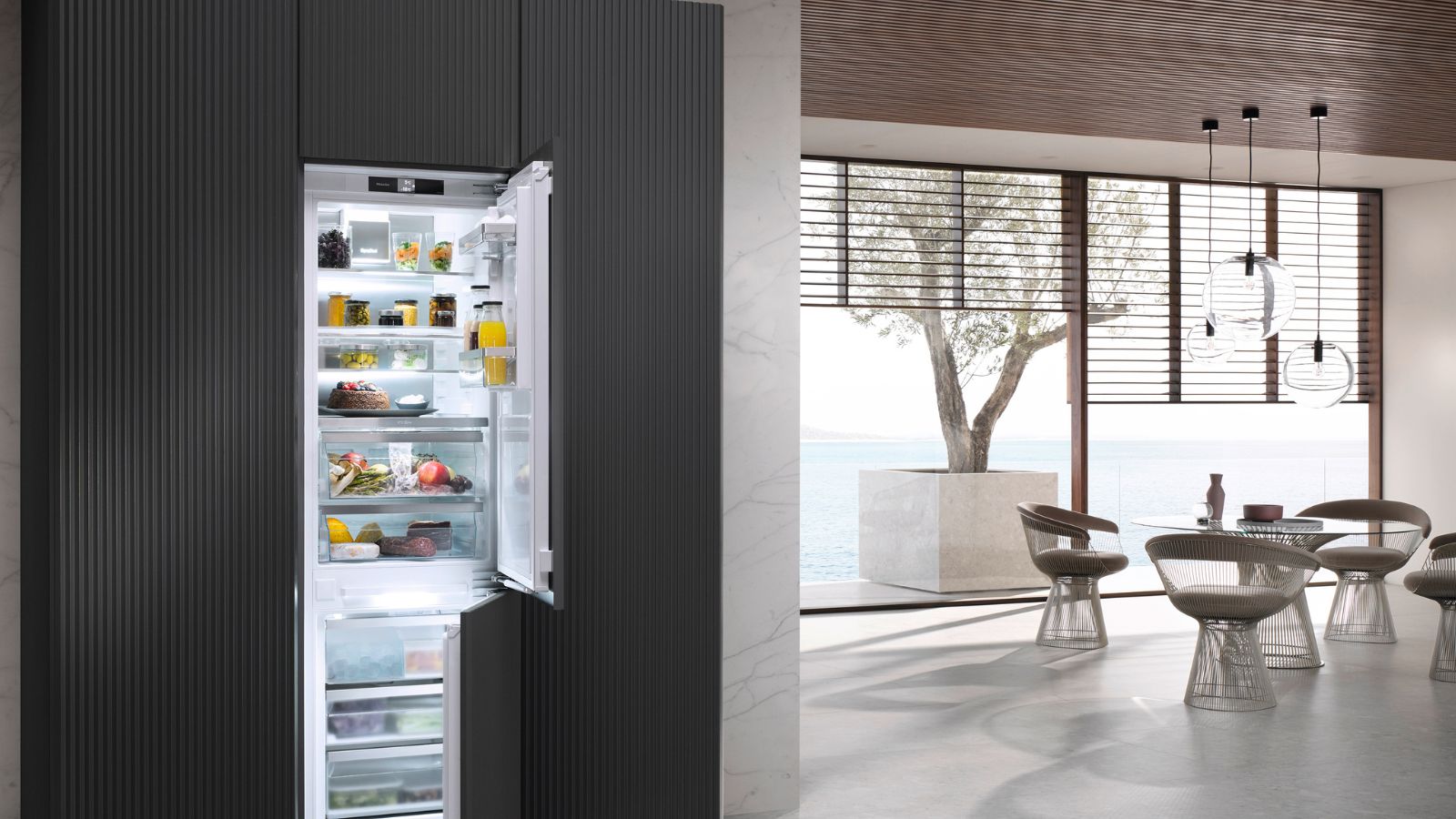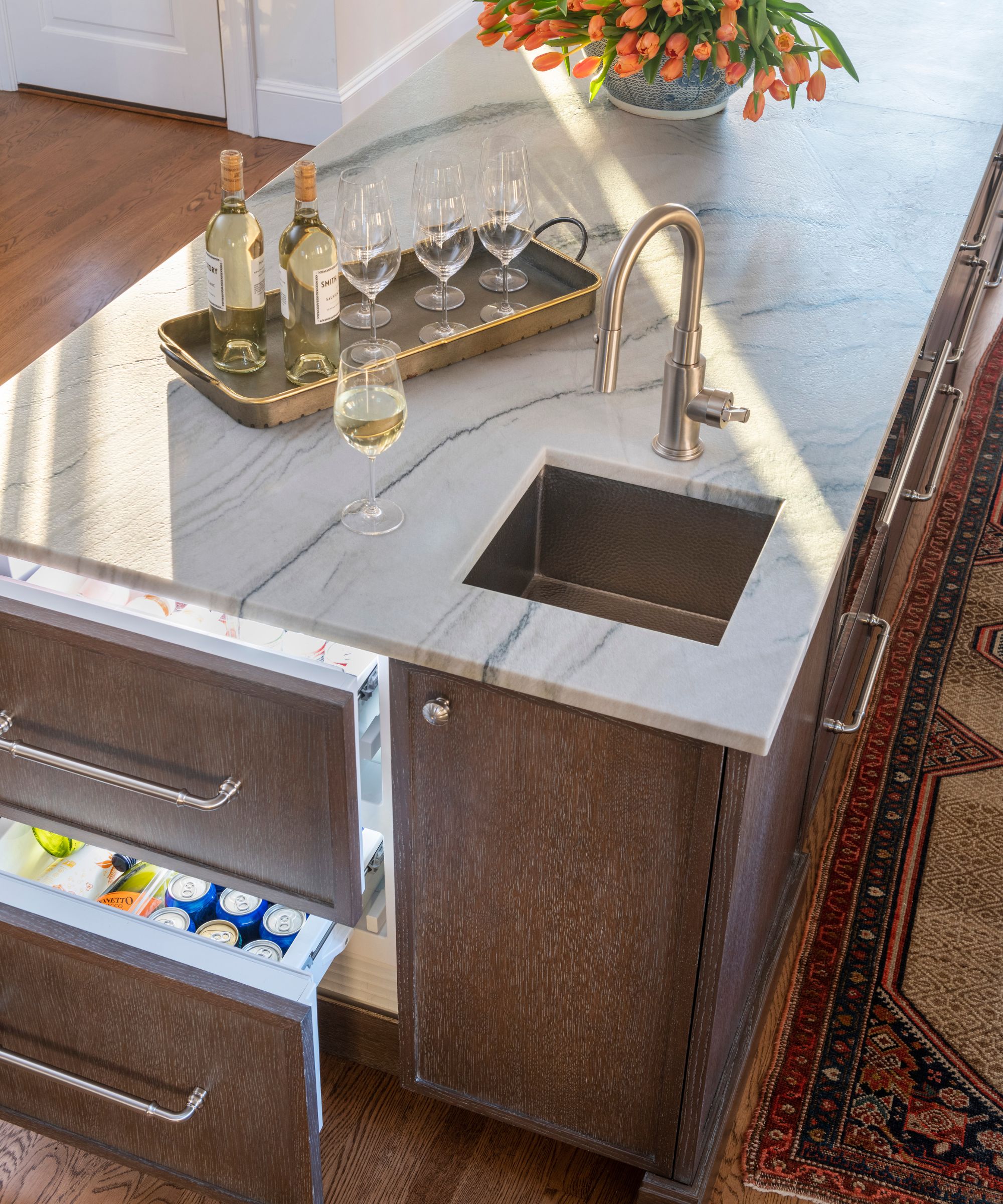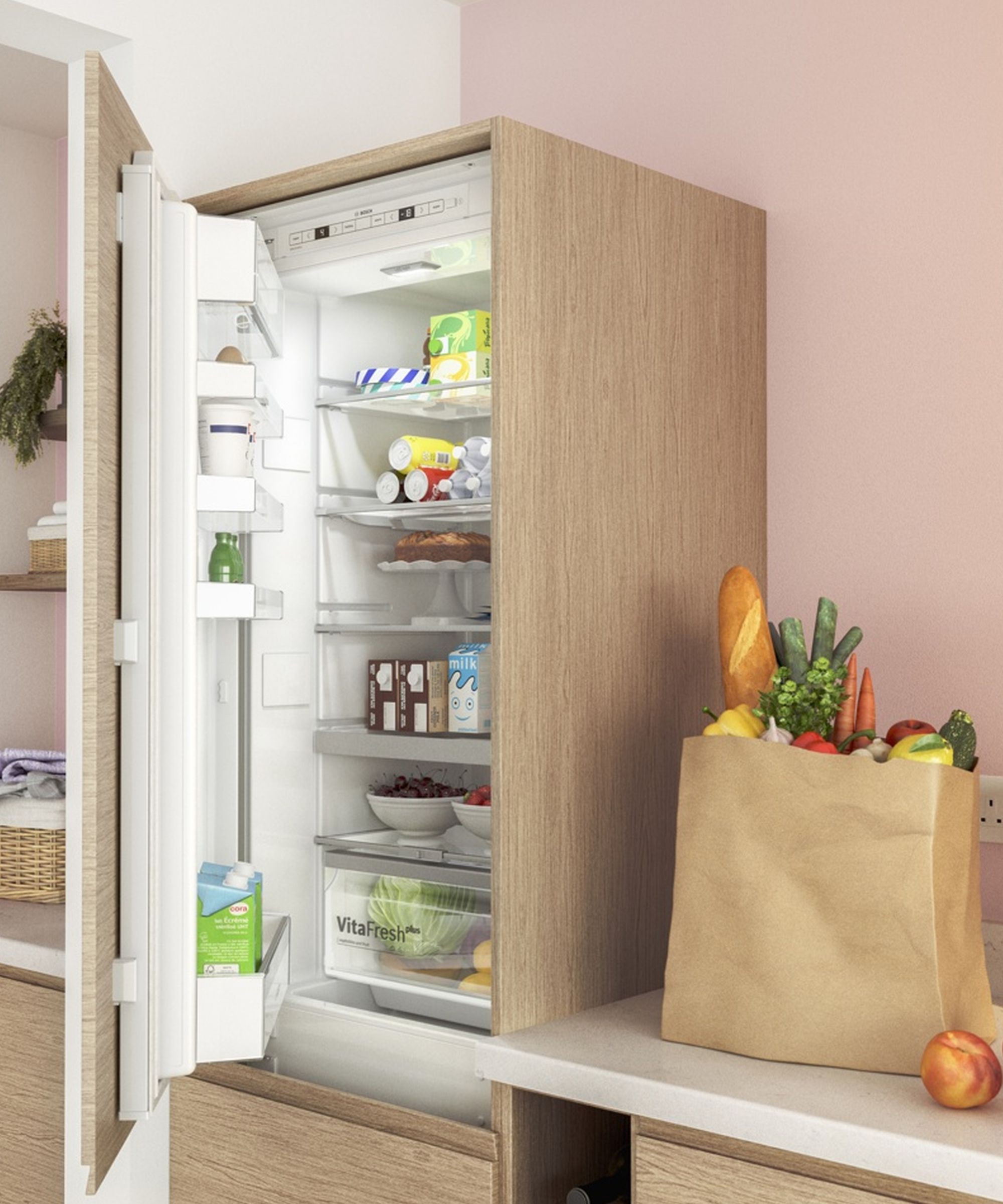
The rubber gasket around the refrigerator door is a notorious spot for mold and mildew growth due to its tendency to accumulate and trap moisture.
Like removing mold from the rubber seal on a washing machine, cleaning this area requires a delicate balance. You need a thorough approach to eradicate mold, which can spread aggressively, while being careful not to damage the seals to preserve the refrigerator's energy efficiency and cooling performance.
As an area we often neglect when cleaning a refrigerator, unchecked mold growth on door seals can pose potential health risks. So, in addition to providing cleaning tips for removing mold from refrigerator door seals, our experts have explained how to prevent this issue from recurring.
How to clean mold off a refrigerator door seal
Whether you are tackling mold or mildew on your fridge seals, be sure to wear gloves, goggles, and a mask to protect yourself from airborne spores that can irritate the skin and are harmful when inhaled. We like this affordable Reusable Face Cover Set from Amazon.
1. Mix the solution

'While using vinegar to kill mold is far more effective than using bleach, I suggest avoiding it,' advises Will Cotter, owner of HappyCleans. 'Seals are typically made of rubber, and vinegar might make them brittle and prone to cracking. Plus, rubber has a way of holding onto smells, so the scent might stick around and mix with the food smells in the fridge which is not a great combo.'
Instead, you can use a mixture of warm water and mild detergent or commercial mildew remover, such as Star Brite from Walmart – especially if the stains are old and need a powerful cleaner to help lighten them.
Alternatively, you can create a cleaning solution by mixing one part hydrogen peroxide with a 3% concentration with four parts water. This solution is particularly effective because hydrogen peroxide is a powerful anti-fungal that kills mold spores without the harshness of chlorine bleach, which can degrade the rubber over time.
If you need a little more abrasive power to get tougher mold off the seals, you can create a paste with water and baking soda to clean the seals. Baking soda is a natural lightening agent, so it's ideal for lifting stains after you've used another product to remove mold spores.
2. Apply the solution

Before applying the solution, move the food to a cooler and take out the refrigerator shelves, drawers, and racks.
Spray the solution or spread the paste evenly over and around the seals.
You can let this sit for about 10-15 minutes. Doing this enhances the effectiveness of the cleaning agent in breaking down the mold spores.
3. Wipe and rinse

Using a soft brush (or an old toothbrush which works well for getting into the folds and crevices of the seal), scrub the seals thoroughly to ensure all mold is removed.
After scrubbing, it's crucial to rinse the area with clean water and dry it completely to prevent further mold growth. Dampen a cloth and wipe the surfaces to remove any cleaning solution residue and mold spores.
4. Dry the seal

Use a clean cloth to thoroughly dry the seals, making sure there’s no moisture left behind to prevent future mold growth. If possible, leave the door open for a while after cleaning to allow the seals to ventilate and dry completely.
Maintenance to prevent mold

'As part of your regular refrigerator cleaning routine, wipe down the seals with the solution bi-weekly to prevent mold buildup,' advises Kelly Salas, Co-Founder of Sierra Vista Maintenance. 'Regular cleaning not only helps keep the seals mold-free but also extends the life of the refrigerator by maintaining the integrity of the seal and managing moisture-related issues effectively.'
FAQs
Can you use oxygen bleach to kill mold on refrigerator seals without damaging them?
Another great way to kill mold on refrigerator door seals is to use oxygen bleach, such as this OxiClean powder, from Amazon. This non-harmful cleaning agent is a safer and less harsh alternative to chlorine bleach and is highly effective at killing mold.
To use this method:
- Mix the oxygen bleach powered with warm water according to the manufacturer's instructions – this will typically be about one tablespoon of oxygen bleach in a gallon of water.
- Apply it to the seals with a sponge and leave it for 10-15 minutes to allow the bleach to penetrate and kill mold spores effectively.
- After the solution has sat, gently scrub the seals with a soft-bristled brush to dislodge any mold residue.
- Then, wipe the seals with a damp cloth to remove any remaining bleach solution and mold residues.
- Dry the seals thoroughly with an absorbent cloth.
Remember, it is essential to keep your cleaning supplies clean, especially after cleaning mold, otherwise, you can transfer mold spores elsewhere during your cleaning task. To avoid this hazardous spring cleaning mistake, be sure to dispose of or thoroughly clean your tools after removing mold from refrigerator seals.







